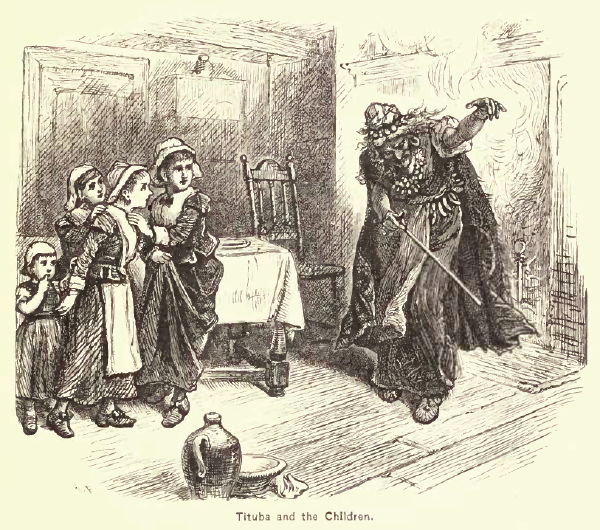The witch trials in Europe lasted a huge 300 years, spanning from the end of the medieval period to the first 100 years of the early modern (1350-1650). Historians estimate between 40,000 and 60,000 were executed as witches. Over 80% of those accused of practicing witchcraft were women, and usually the most vulnerable in society – the mentally ill or elderly.
Later, after the witch trials began dying out in Europe, they started across the pond with the 17th century seeing the rise of the Connecticut and Salem Witch Trials in America.
Alleged sufferers of witchcraft would have fits and convulsions; accusing their friends and neighbours. This was usually down to a combination of religious fervour, mass hysteria, and petty neighbourhood politics.
Across Europe there were many causes for the spate of witchcraft accusations, and different methods of testing to prove someone was a witch – very few of which were remotely legitimate.
Here are 7 of the most ridiculous ways to prove someone was a witch.
7. Witches Teat
Nowadays the witches’ mark or teat would be known as a third nipple. But back in early modern Europe, this simple little blemish was far worse than a little embarrassing.
Having a witches’ teat meant you bore the mark of the devil; a physical sign of the deal you made with him. The witches’ teat was a gift from Satan, supposedly for the witch to use to nourish their familiar… like that person you know who’s just a little too attached to their pet.
As almost all of us have a funny shaped mole, piece of raised skin or even a third nipple, it was almost inevitable that once accused and stripped naked, they would find something to call a witches’ teat or mark and used to condemn you.
6. Witch Cakes
The most infamous use of witch cakes was during the Salem Witch Trials. When Abigail Williams and Elizabeth Parris became the first two girls to act under a witch’s spell; Tituba, slave to the town Reverend, baked a witch cake to determine who was cursing the girls. Ironically, Tituba was then accused of witchcraft herself.

But What Were Witch Cakes?
Witch cakes were made by taking the urine of the person suffering under witchcraft and baking it with rye-meal and ashes into a cake. The witch cakes would then be fed to a dog who would supposedly identify the witch.
How the dog did this is unclear, but as talking dogs don’t exist, we assume there were very few convictions using witch cakes.
5. Prick test
The prick test is when you match with a guy on Tinder and you can’t tell…. Ahem, wrong article.
In the case of identifying witches, the prick test wasn’t quite as enjoyable. This method largely took place in 16th and 17th century England, when witching pamphlets were distributed, warning that witch marks weren’t able to bleed or cause pain.
Professional witch-finders would use the prick test – scratching or poking the mark with “sharp” instruments to test this. If it failed to bleed, the accused was guilty of witchcraft.
Pricking paid well (haha), and many took up the profession, using fake blunt needles to ensure the marks didn’t bleed and the accused would be confirmed as a witch.
4. Touch Test
Like most witch tests, with a bit of malice and desire to see your enemy suffer, you could easily prove that anyone was a witch.
The touch test is a great example of this.
They would bring the suspected witch to the person claiming to be a victim of their witchcraft. As the accuser convulsed, screamed and generally put on a good show; they would force the ‘witch’ to touch them. If they stopped seizing, then the accused was a witch, and the accuser cured.
Nothing fishy there…
3. Prayer test
Remember the scene in The Exorcist where the priest recites the Lord’s Prayer only to have the girl throw up vicious green slime all over him? Well, this is sort of the same thing.
Possession and witchcraft are a little different, so rather than try to exorcise a demon, the accused witch has to prove she has not made a deal with the devil.
To do this, he or she has to recite the Lord’s Prayer with no mistakes.
That means no stuttering, pauses, panicked breaths, or tripping over your words. All highly likely for someone who is terrified they’re about to be hanged for witchcraft…

2. Drowning test
Thanks to propaganda by the Victorians, we largely misunderstand the famous drowning test.
Nowadays, many believe the drowning test involved dunking someone in the water and seeing if they floated or sank. If they floated, they were a witch and hanged, if they sank, they were innocent but still dead from drowning.
This isn’t quite right. Whilst the tests methods to find out if someone was a witch are correct, they didn’t simply leave the innocents to drown.
Instead, the accused was strapped to a chair that was operated from the river or lake bank by a series of pulley systems. If the suspected witch began to drown, they would haul them up onto dry land, their innocence marked for all to see.
But this test had issues beyond drowning the innocent. When immersed in water, most people don’t really sink or float, we sort of just bob awkwardly in the middle. More often than not, it was the individuals watching who decided which it was, and thus neighbourhood politics played a massive factor in deciding who was or wasn’t a witch.

1. Spectral Evidence
Spectral evidence was akin to seeing shapes in the dark. The victim of witchcraft would claim they saw a ghostly apparition or shadow in the shape of a person. The person they saw had made a deal with the devil that meant he could occupy their form in order to torture their victims.
The person they named was therefore a witch… obviously.
Now if you can’t see the glaring holes in this “evidence”, or think it’s a great way to get rid of your pesky neighbour whose bush keeps growing into your garden, then you’d fit right in accusing victims of the Salem Witch Trials.

I found this interesting, historical, and informative. Thanks so much for sharing.